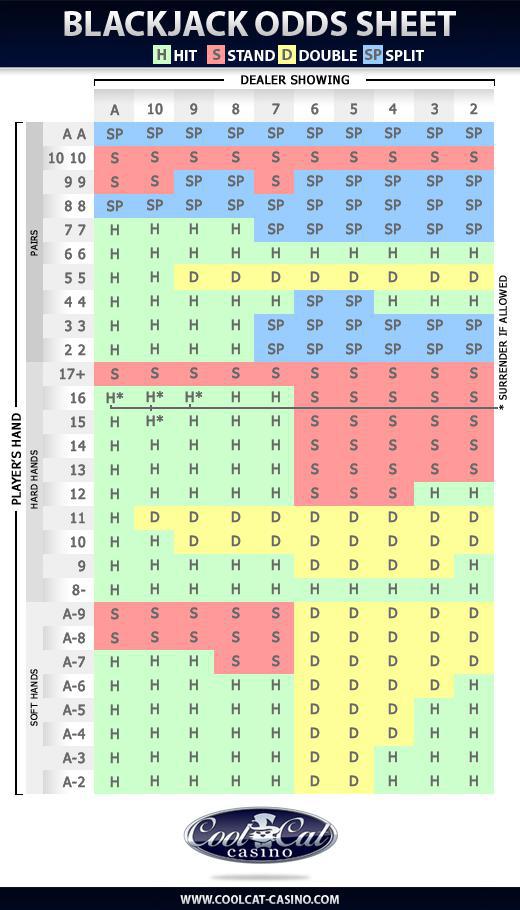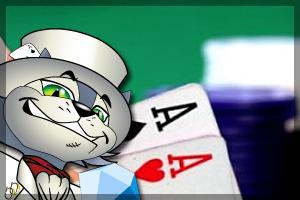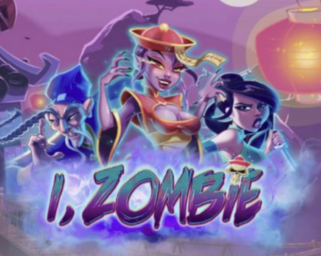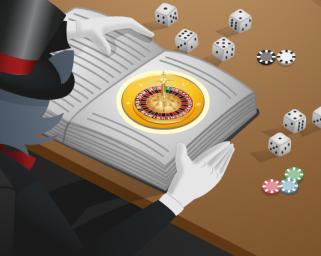Blackjack, or twenty-one, is one of the most popular casino games. There is luck involved in blackjack. But the game also rewards skill insofar as knowledge of blackjack odds can improve your chances of winning. That’s where a handy blackjack odds sheet comes in. It gives you a basic understanding of when it makes mathematical sense to hit, stand, double down, or split. This knowledge increases your edge considerably.
Keep a Blackjack Odds Sheet at Hand
Some players like to consult a blackjack odds sheet covering basic strategy for all situations when they play. These sheets advise players how to play their hands according to the two cards dealt and the one card showing in the dealer’s hand. The advice is based on the odds or probability of subsequent cards being dealt as calculated with the knowledge of cards already seen.
 A typical sheet will be divided into three categories of blackjack hands — “hard” hands (not including pairs), “soft” hands, and pairs.
A typical sheet will be divided into three categories of blackjack hands — “hard” hands (not including pairs), “soft” hands, and pairs.
“Hard” hands refer to hands that do not contain an ace. Play an ace as either 1 or 11. So if you’re dealt a hand that doesn’t contain an ace, it can only count for a single value. For instance, if the dealer gives you a 10 and a 7, you have a “hard 17.” However, if you get an ace and a six, that’s a “soft 17”. That’s because you have an option to consider the ace as 1 or 11, and thus play your hand as a 7 or as a 17.
“Soft” hands give you an extra option to consider. So the blackjack odds sheet separates those hands from the “hard” hands because the strategy is different.

Hard Hands
If you receive “hard” blackjack hands adding up to 17 through 20, these sheets will always advise you to stand. Say you get a “hard” hand totaling 13-16. You’ll want to stand sometimes and hit other times. The decision hinges on what card the dealer has showing. If the dealer has a low card showing (2 through 6), you’ll want to stand with your 13-16 hand. If the dealer shows a higher card (7 through A), you’ll want to hit.
All of the other combinations are covered on these sheets as well, including instances when you want to consider “doubling down” (that is, double your bet). Do this when you get a particularly good hand, such those adding up to 10 or 11.
Soft Hands
As mentioned, “soft” hands containing an ace are often played differently. You should hit a lot more often on these hands. You only usually stand with A-9 (adding up to 20) or A-8 (19), and sometimes A-7 (18). The sheet advises you to hit initially with a lot of these hands. But once your total is more than 11 your hand essentially becomes a “hard” hand. That’s because you’ll no longer have the flexibility to play your ace as 1 or 11. That’s when you consult the “hard” hands section of the sheet.
For instance, say you get an ace and a 6. That’s either 7 or 17. You hit and receive a 7. Now you have A+6+7 = 14. That is to say, you must play your ace as a 1 now, because if it were worth 11 you’d be over 21 and bust. Now you look up on the “hard” section of the blackjack odds sheet to see the advice for how to play a 14 versus whatever card the dealer is showing.
Splitting Pairs
 Finally, consider playing pairs separately because. Because with pairs you always have an option to split your hand into two hands and have new cards dealt to go with each of your two original cards.
Finally, consider playing pairs separately because. Because with pairs you always have an option to split your hand into two hands and have new cards dealt to go with each of your two original cards.
If you receive two aces, for instance, you’re always advised to split those. The same goes for two 8s — always split. Meanwhile, if you get two 10s (equaling 20) you should always stand. Split most of the other pairs or you should take a hit. But the advice varies according to the dealer’s up card.
Learning basic strategy for blackjack might seem complicated at first, but even just a little study of a blackjack odds sheet can go a long way at the tables.










